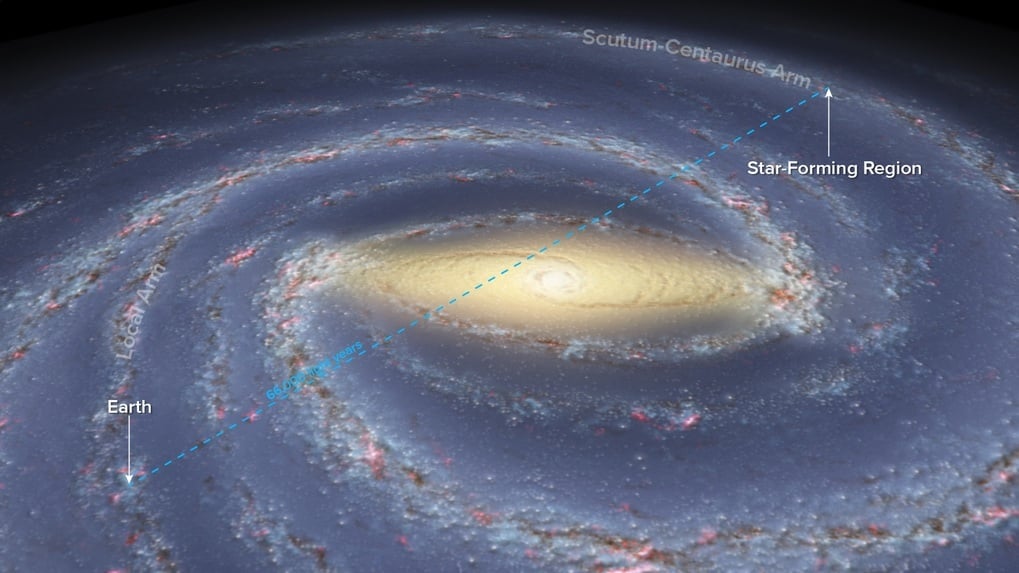How Does a Star Form?

Virtual Star Party - December 1, 2013 - Dying Comets, Smashing Galaxies and Cosmic Bees
Spectacular Liftoff Thrusts China's First Rover 'Yutu' to the Moon

India's First Mars Probe 'MOM' Blasts Free of Earth Joining MAVEN in Race to Red Planet

Mother of All Slingshots Set to Hurl India's MOM Probe to Mars

ISON Appears To Be Fading, But Astronomers Keeping Eyes Peeled

Zombie ISON 'Behaving Like A Comet', Stunned Astronomers Say

Chinese 'Jade Rabbit' Rover Aims For The Moon On Sunday

Spacesuit Leak And Fist Pumps: Ride Along With Astronaut's Eventful Space Station Mission

Is Comet ISON Dead? Astronomers Say It's Likely After Icarus Sun-Grazing Stunt

All is GO for SpaceX Thanksgiving Day Launch that could 'Rock' Space Industry - Live Webcast

This Rover Could Hunt For Lunar Water And Oxygen In 2018

A Self-Healing Satellite? Students Seek Your Funds To Launch Prototype

What is the Universe Expanding Into?

Curiosity Mars Rover Back in Action after Power Glitch

India's MOM Mars Probe Images Earth's Children Prior to Nail Biting Red Planet Insertion

Forging Stars - Peering Into Starbirth and Death

ISON Watch: A Post-Perihelion Viewing Guide

Anybody Want A Peanut? New Model Shows Tasty Orbital Shapes In Milky Way's Bulge

Kepler May Go Planet-Hunting Again! Infographic Shows How That Would Work

Astronauts To Chase Down Turkey Meal For Thanksgiving

Second Planetary System Like Ours Discovered

Watch This Asteroid Not Hit Earth
Incredible Astrophoto: Deep and Wide View of the Milky Way

Home Computers Discover Gamma-Ray Pulsars

How Could We Recycle Satellites For Newer Missions?

NASA Plans To Deepen Asteroid Searches With Planetary Resources

Carnival of Space #329

Astronomy Cast 323: Isotopes
Elon Musk Briefs Universe Today & Media ahead of Revolutionary Falcon 9 Blastoff

Are There More Grains of Sand Than Stars?

'Will We Soon Find Ourselves Back In The Stone Age?' Why Swarm Is Watching Our Magnetic Field

Guide to Safely Viewing Comet ISON on Perihelion Day, November 28

Speedy Science: Here's Four Years Of Herschel Telescope Work In A Short Video

Virtual Star Party - November 24, 2013: Comets and More!
Maiden Next Gen SpaceX Falcon 9 launch from Cape Canaveral set for Nov. 25

NASA's LADEE Probe Starts Science Study of Thin Lunar Atmosphere and Dusty Mystery

Say Goodbye to Comet ISON (for now): Timelapse and Image Gallery

NASA's STEREO Spacecraft Spots Comets ISON and Encke

Original Drawing of MAVEN Launch is a Throwback to the Early Days of Space Exploration

Neutrino Detection Could Help Paint an Entirely New Picture of the Universe

Weekly Space Hangout - November 22, 2013: MAVEN, Minotaur, Comet Nevski
Astronomers Catch a Galactic Threesome in the Act

Astrophoto: Plane Pwns the Moon

Watch PBS NOVA's "Asteroid—Doomsday or Payday?"

Volcanic Blast Forms New Island Near Japan

NASA Halts Work on its New Nuclear Generator for Deep Space Exploration

Watch Live Webcast: Countdown to Comet ISON

Take a Virtual 3-D Spacewalk Outside the International Space Station

 Universe Today
Universe Today